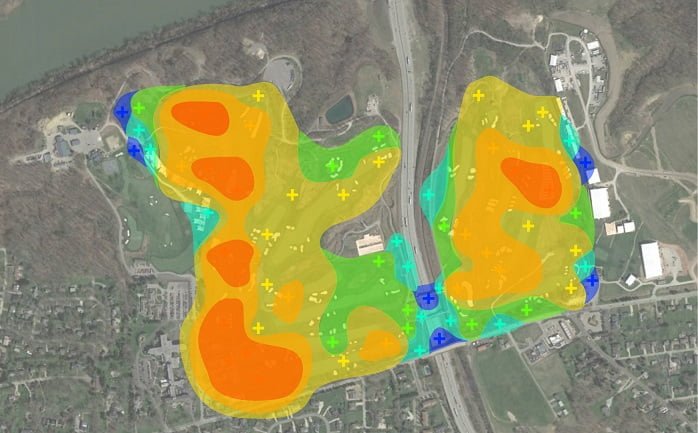PGA of GB&I Reveals Speaker Line-Up
Bangkok, Thailand: A full line-up of speakers has been announced for this year’s PGA of Great Britain & Irelan...

Phoenix, Arizona, United States: Golf Course architects Forrest Richardson and Jeff Danner of Richardson | Danner have introduced GolfBase, a proprietary assessment system that measures the overall player experience of any given golf course.
By using GolfBase, course owners and clubs are able to visualise in graphic form where the psychological ‘highs’ and ‘lows’ occur across their golf course.
Danner said: “What we’ve created is a measurement system that translates into a highly specialised map of the golf course. Through a process that quantifies such factors as aesthetics, excitement, fun, challenge, distractions and conditioning, we are able to develop a ‘contour map’ that depicts the emotional aspects across an entire golf course.”
A completed GolfBase map is essentially a heat map that shows where the great, good, average and poor areas exist across an existing course.
Richardson said: “It looks much like your typical topographical map. But here the ‘high points’ are not physically elevated – instead, these points represent the places during the routing of the courses where the golfer is getting the most experiential benefit of the course and the game.
“It may be a particular tee, an area of a fairway, or a green site. When we identify the ‘high spots’ we can understand where the greatest thrill, entertainment and aesthetic qualities are being delivered during the round. Of course, with this mapping we’re also able to identify the low points – where the course fails to deliver excitement and positive memories.”
The GolfBase tool is used to assess a course, providing a quantitative foundation upon which renovation, remodelling and improvement investments can be weighed.
“We’re establishing where improvements will be most appreciated and can make the most impact,” added Danner. “Golf renovation work has largely been driven by subjective opinion. With GolfBase we are able to look at the course objectively, and with an understanding that is based on results generated by a software platform that captures data and then translates that into a visual picture that shows where an investment is more likely to pay off.”
The GolfBase system uses a metric comprised of more than a quarter million variables that are collected across an entire course, including the arrival entry, clubhouse grounds and practice areas. These data points are managed across variables including strategy, ambiance, aesthetics and intrigue.
The result is often eye-opening. Common perceptions are not always accurate once decision-makers are able to visualise the way a course actually unfolds to the golfer.
“It’s a ‘Geiger counter’ for golf emotions,” added Richardson. “We’re capturing where the strongest signals are coming from – and we’re also discovering which areas need improvement and enhancement.”

GolfBase data can be augmented with golfer surveys and course condition assessments, such as that provided by GreenSight Agronomics and similar services.
With golfer surveys, as an example, GolfBase can compare where players feel a course delivers its best and worst potential to that measured by the software’s analytics. This comparison, while often similar, can be used to better understand perception versus reality, and ultimately where budgets are best focused.
A typical GolfBase assessment for 18 holes ranges from US$8,000 to US$11,000 according to Richardson | Danner. The service covers on-site data capturing and the process of generating the GolfBase mapping.
Richardson | Danner are beginning to integrate the service to current assignments, providing clients with an extra layer of due diligence that in many cases will be ‘bankable’ in terms of quantifying ROI for projects.
Danner said: “Whenever we can demonstrate an objective need for improvement, we are helping to justify the expenditure and bring a sense of assuredness to the goals and plans.”
Richardson | Danner is an Associate Business Member of the Asian Golf Industry Federation.
Bangkok, Thailand: A full line-up of speakers has been announced for this year’s PGA of Great Britain & Irelan...
Singapore: In-form Patty Tavatanakit will headline next week’s Hana Financial Group Singapore Women’s Open at...
Florida, United States: The Breakers Palm Beach is using Capillary Bunkers technology and the Wash Box to preserve bu...
